CentOS7下的Django2集成部署五:Jenkins的流水线部署pipeline-job
1.Push本地的项目到GitLab
准备工作:由于之前在MySQL设置时禁止了root用户的远程访问,此处需要授权一个新的用户
mysql> GRANT ALL PRIVILEGES ON *.* TO 'py3web'@'%' IDENTIFIED BY '123456' WITH GRANT OPTION; Query OK, 0 rows affected, 1 warning (0.00 sec) mysql> flush privileges; Query OK, 0 rows affected (0.00 sec)
#新建数据库
mysql> CREATE DATABASE pyblog DEFAULT CHARACTER SET utf8 COLLATE utf8_general_ci;
Query OK, 1 row affected (0.01 sec)
本地项目初始目录

在GitLab上新建项目
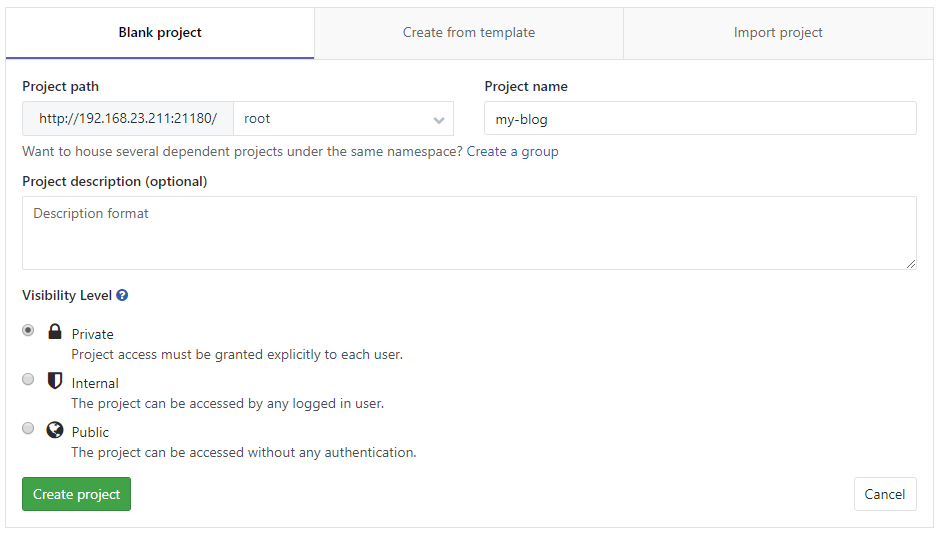
push本地项目到GitLab
admin@DESKTOP-BC8FMN2 MINGW64 /e/python $ cd my-blog/ $ git init Initialized empty Git repository in E:/python/my-blog/.git/ $ git remote add origin git@192.168.23.211:root/my-blog.git $ git add . $ git commit -m "initial code" admin@DESKTOP-BC8FMN2 MINGW64 /e/python/my-blog (master) $ git push -u origin master Counting objects: 117, done. Delta compression using up to 6 threads. Compressing objects: 100% (113/113), done. Writing objects: 100% (117/117), 1.35 MiB | 7.15 MiB/s, done. Total 117 (delta 14), reused 0 (delta 0) remote: Resolving deltas: 100% (14/14), done. To 192.168.23.211:root/my-blog.git * [new branch] master -> master Branch 'master' set up to track remote branch 'master' from 'origin'.
2.创建Jenkins的pipeline-job
创建步骤

基本设置

构建触发器
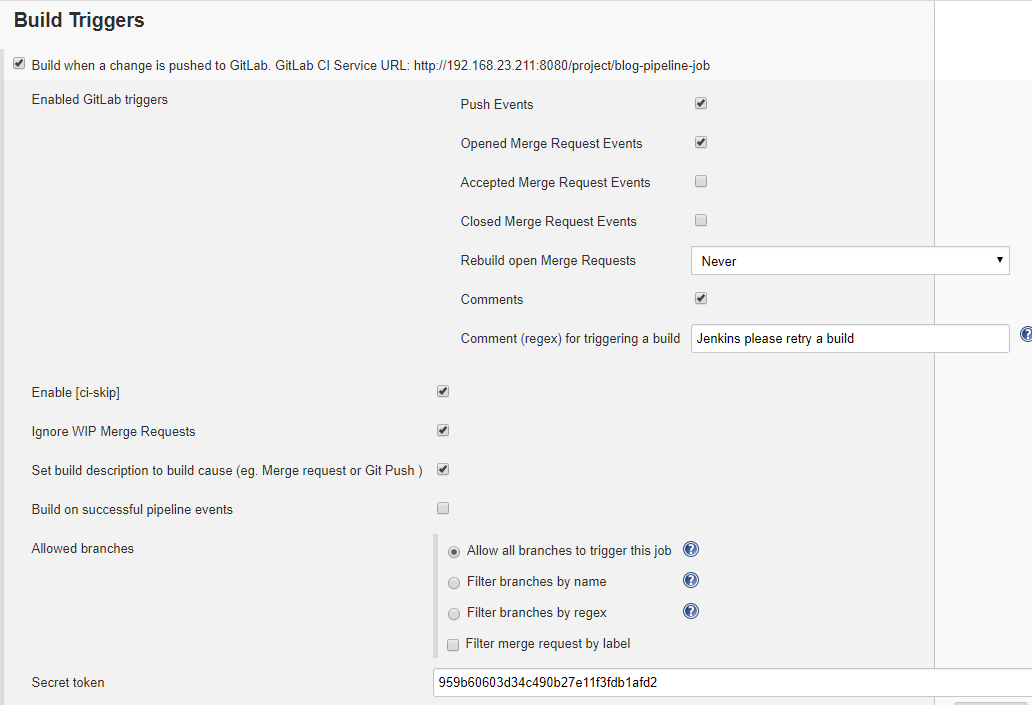
流水线构建

重新保存下设置。
同样的,需要将 Build Triggers里的GitLab CI Service URL http://192.168.23.211:8080/project/blog-pipeline-job 和 Secret Token 配置到GitLab的该git项目的settings-->intergrations中

此时需要在项目中添加下Jenkinsfile,以便后面的调试

提交后,Jenkins这边就已经自动触发了
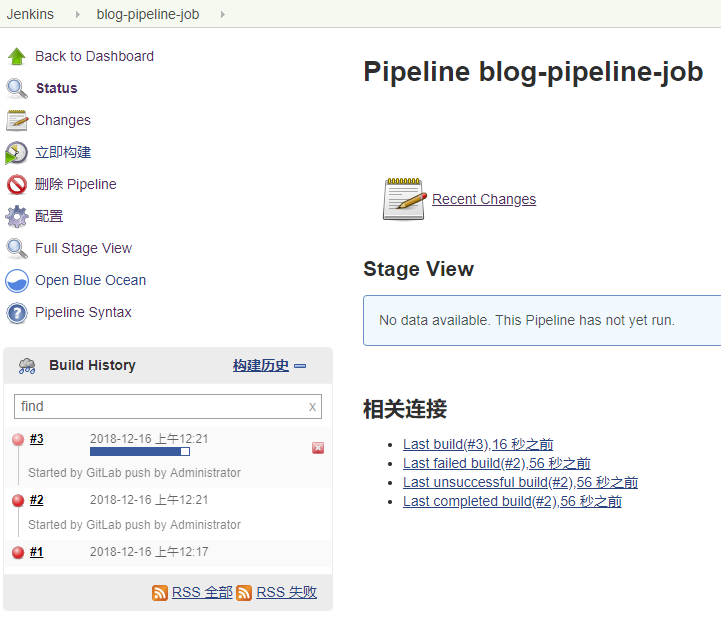
执行完成后可以看到流水线记录
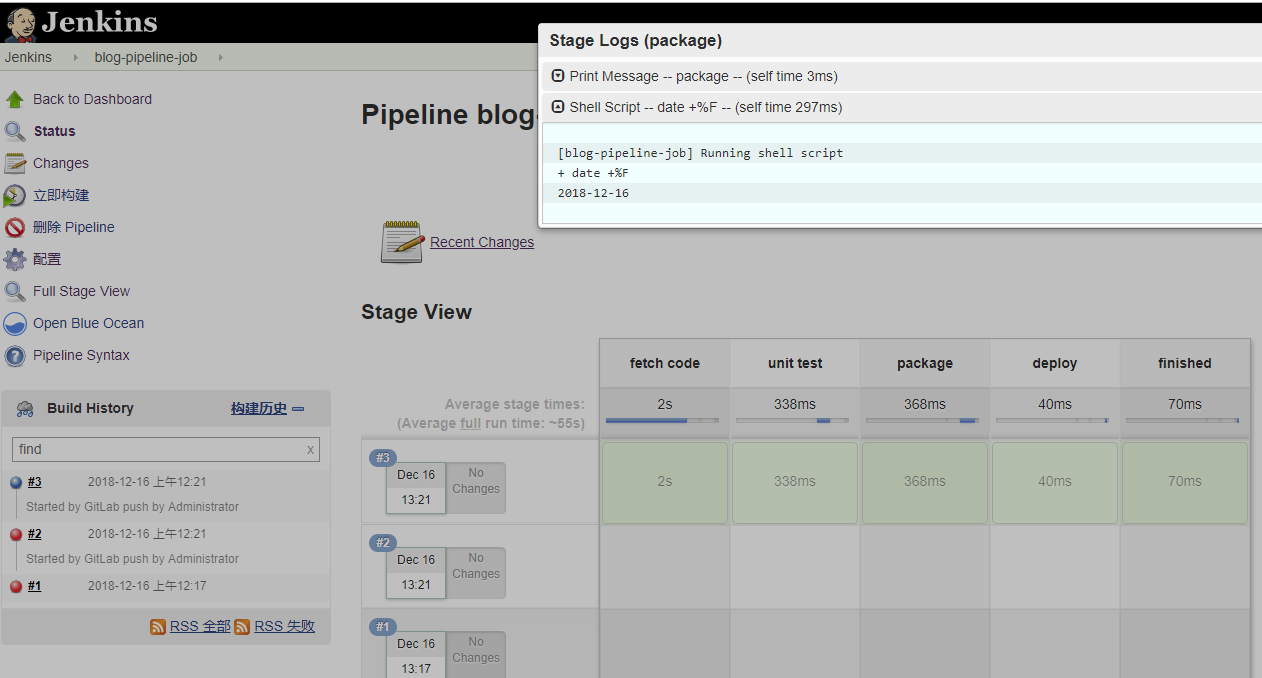
基本上pipeline已经就绪了
3.初步调试构建
给my-blog项目配置nginx的conf
[root@home-ct75211 ~]# vim /etc/nginx/conf.d/my_blog.conf

1 server { 2 listen 80; 3 server_name www.my-blog.cc; 4 5 #charset koi8-r; 6 7 #access_log logs/host.access.log main; 8 9 location / { 10 include uwsgi_params; 11 uwsgi_pass 127.0.0.1:21190; 12 uwsgi_param UWSGI_SCRIPT luffy_blog.wsgi; 13 uwsgi_param UWSGI_CHDIR /usr/share/nginx/html/my_blog; 14 index index.html index.htm; 15 client_max_body_size 35m; 16 #uwsgi_cache_valid 1m; 17 #uwsgi_temp_file_write_size 64k; 18 #uwsgi_busy_buffers_size 64k; 19 #uwsgi_buffers 8 64k; 20 #uwsgi_buffer_size 64k; 21 #uwsgi_read_timeout 300; 22 #uwsgi_send_timeout 300; 23 #uwsgi_connect_timeout 300; 24 } 25 26 #error_page 404 /404.html; 27 28 # redirect server error pages to the static page /50x.html 29 # 30 error_page 500 502 503 504 /50x.html; 31 location = /50x.html { 32 root html; 33 } 34 35 36 }
[root@home-ct75211 ~]# systemctl restart nginx
要自动部署,后面的流水线脚本则需要重新修改下

1 pipeline { 2 agent any 3 stages{ 4 stage("fetch code"){ 5 steps { 6 echo "fetch code" 7 sh "pwd" 8 } 9 } 10 stage("unit test"){ 11 steps { 12 echo "unit test" 13 echo "${BUILD_NUMBER}" 14 } 15 } 16 stage("package"){ 17 steps { 18 echo "package" 19 sh 'tar czf /opt/blog-${BUILD_ID}.tar.gz ./* --exclude=./git --exclude=Jenkinsfile' 20 } 21 22 } 23 stage('deploy'){ 24 steps { 25 sh 'cd /var/webroot && mkdir blog-${BUILD_ID}' 26 sh 'cp /opt/blog-${BUILD_ID}.tar.gz /var/webroot/blog-${BUILD_ID}' 27 sh 'cd /var/webroot/blog-${BUILD_ID} && tar xf blog-${BUILD_ID}.tar.gz && rm -f blog-${BUILD_ID}.tar.gz' 28 sh 'cd /var/webroot && rm -rf my_blog && ln -s /var/webroot/blog-${BUILD_ID} /usr/share/nginx/html/my_blog' 29 } 30 31 } 32 stage('finished'){ 33 steps { 34 echo "finished" 35 sh "date +%F" 36 } 37 38 } 39 } 40 }
提交后,Jenkins那边的显示为
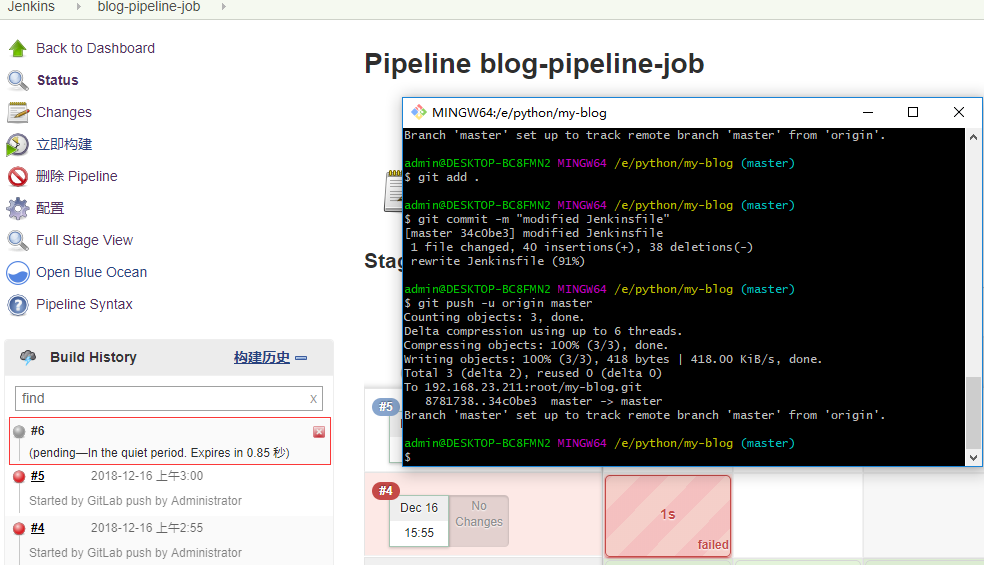
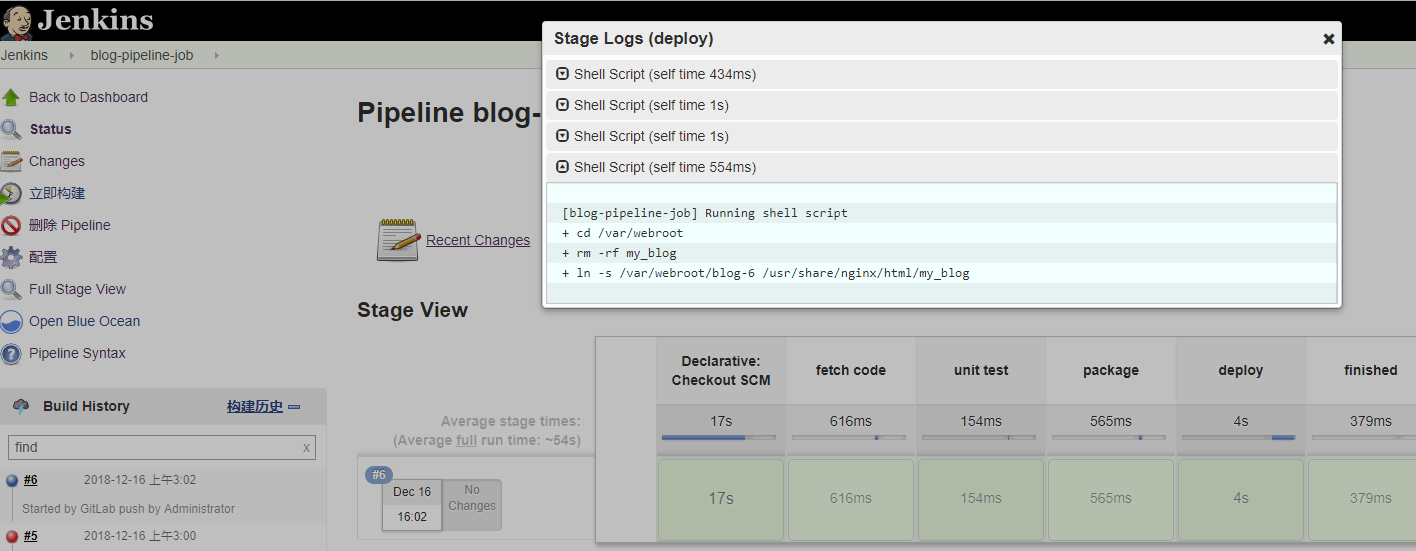
可以看到触发的脚本事件正常运行了,访问下看下
[root@home-ct75211 my_blog]# elinks http://www.my-blog.cc --dump Internal Server Error
# 看下uwsgi的日志
[root@home-ct75211 my_blog]# tailf /var/log/uwsgi21190.log added /root/py3web/lib/python3.7/site-packages/ to pythonpath. ModuleNotFoundError: No module named 'my_blog' unable to load app 1 (mountpoint='www.my-blog.cc|') (callable not found or import error) --- no python application found, check your startup logs for errors --- www.my-blog.cc [pid: 831|app: -1|req: -1/5] 127.0.0.1 () {42 vars in 539 bytes} [Sun Dec 16 08:09:16 2018] GET / => generated 21 bytes in 64 msecs (HTTP/1.1 500) 2 headers in 83 bytes (0 switches on core 0)
因为虚拟环境的pip里只装了Django,但项目中还有用到了其他模块,此处需要同步下pip环境。其实到这里,pipeline的部署已经基本完结了,后面的基本就属于Django项目的环境问题了



